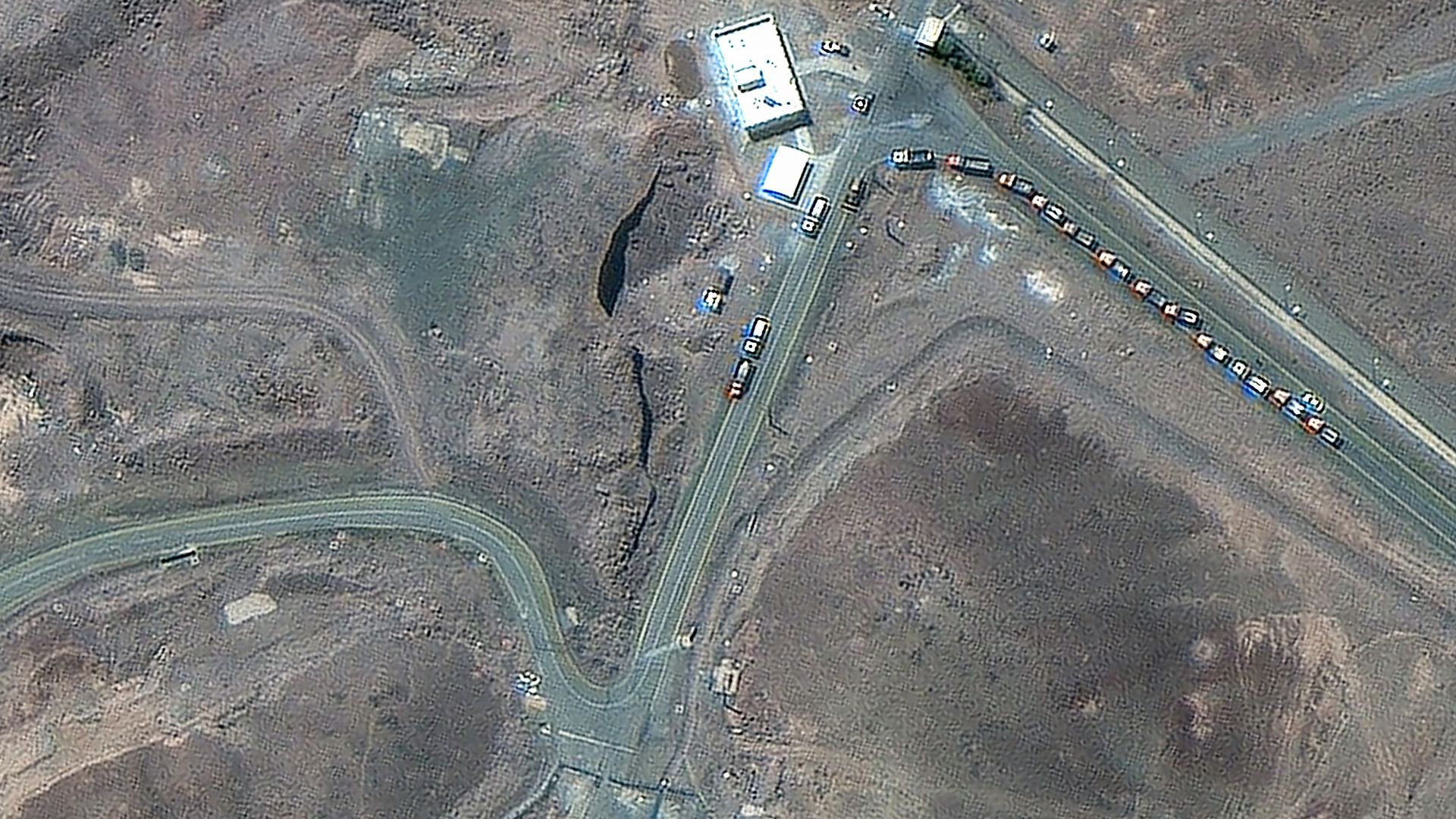In the wake of a massive U.S. military operation targeting Iran’s nuclear infrastructure, uncertainty continues to surround the true extent of the damage. Experts are questioning whether Iran’s ability to build a nuclear weapon was really neutralized.
The coordinated strikes of Operation Midnight Hammer, which included 30 Tomahawk cruise missiles and 14 Massive Ordnance Penetrators, were aimed at three key nuclear facilities: Natanz, Isfahan and the Fordo enrichment site. President Donald Trump described the impact as “monumental,” claiming the most serious damage occurred “far below ground level.”
But despite the show of force, satellite imagery, intelligence reports and comments from international nuclear experts suggest the U.S. may not have delivered a knockout blow.
Was there a pre-strike evacuation?
In the days before the bombing, Maxar Technologies’ satellite images revealed at least 16 large trucks parked outside Fordo — a highly fortified underground facility. Experts suspect the trucks may have removed crucial centrifuges or partially enriched uranium before the attacks.
It’s likely that Iran anticipated the strikes and took steps to preserve parts of its program, according to Sima Shine, a former Mossad official and senior researcher at Israel’s Institute for National Security Studies.
In an interview with the Telegraph, Shine warned that Iran has hundreds, if not thousands, of secret facilities around the country. She said it’s not just possible, but highly likely, that Iran moved sensitive equipment to those hidden sites scattered across the country.
880 pounds of missing uranium
The International Atomic Energy Agency (IAEA) also confirmed Iran moved approximately 880 pounds of 60% enriched uranium out of the Isfahan facility before the U.S. strikes. That material — now unaccounted for — is enough to produce up to 10 nuclear weapons if further enriched.
U.S. Vice President JD Vance, in a post-strike interview with ABC News, acknowledged the missing uranium, stating: “We are going to work in the coming weeks to ensure that we do something with that fuel.”
Vance added that Iran no longer has the ability to turn that enriched uranium into weapons-grade material, but offered no supporting evidence. The vice president said several times that the sensitive nature of the classified information prevented him from speaking on it.
Damage assessment still incomplete
As of publication, no independent inspectors have been granted access to the targeted sites. U.N. nuclear chief Rafael Grossi noted: “At this time, no one, including the IAEA, is in a position to assess the underground damage at Fordo.”
Satellite photos analyzed by multiple watchdog groups show partial tunnel collapses at Fordo and Isfahan, with visible craters at Natanz. But satellite imagery can only tell analysts so much about the remaining integrity of the underground facilities. Experts say it’s possible Iran attempted to fortify some tunnels by filling them with soil just before the attack, potentially to absorb the force of the strikes or conceal equipment.
Political fallout and global reactions
The strikes drew mixed reactions internationally. Australian Foreign Minister Penny Wong publicly supported the action, stating: “We support action to prevent Iran getting a nuclear weapon.”
Meanwhile, Russia’s U.N. ambassador, Vassily Nebenzia, accused the U.S. of “gambling with the safety and well-being of humanity.”
With Iran’s supreme ayatollah in hiding, leadership and defense of the country was turned over to the Islamic Revolutionary Guard Corps (IRGC), which warned of retaliation but has yet to disclose how — or when — that might occur. “The timing, nature, and scale of our response will be determined by our military leadership,” Iranian U.N. Ambassador Amir Saeid Iravani said during an emergency Security Council meeting.
A strategic gamble
In Washington, the Trump administration is navigating a delicate balance between military escalation and diplomatic maneuvering. Trump repeatedly insisted the strikes were necessary to prevent Iran from acquiring a nuclear weapon, but he also hinted at more sweeping ambitions.
“It’s not politically correct to use the term, ‘Regime Change,’ but if the current Iranian Regime is unable to MAKE IRAN GREAT AGAIN, why wouldn’t there be a Regime change???” Trump posted on Truth Social. His comments were at odds with Defense Secretary Pete Hegseth’s assurance that the mission’s goal was not regime change.
What happens next?
Israel’s U.N. Ambassador Danny Danon told the Security Council that the world “must ensure Iran is never a nuclear threat again.” But doing so may now depend on securing what’s left of Iran’s nuclear material and convincing Tehran to surrender its last major bargaining chip.
At the time of publication, a fragile ceasefire between Israel and Iran appears to be holding. How long it lasts, and whether the U.S. and its allies can negotiate a permanent end to Iran’s nuclear ambitions, remains to be seen.
